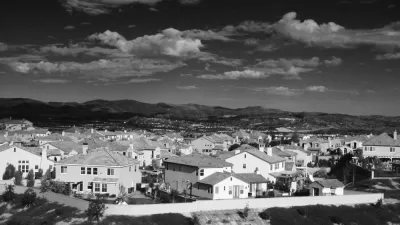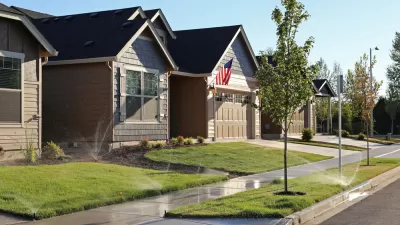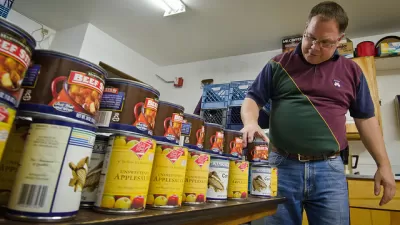A Brookings Study of census data finds that since 2000, the number of poor people in the suburbs jumped by 37.4% to 13 million and "the growth rate of suburban poverty is more than double that of cities."
"Cities still have higher poverty rates - about 19.5 percent, compared with 10.4 percent in the suburbs. But the gap has been steadily narrowing. In a reversal from 2000, the number of poor people living in the suburbs now exceeds those in cities by roughly 1.6 million," reports Hope Yen.
"More than half, or 57, of the 100 largest U.S. metro areas had substantial increases in poverty. They were most evident in Sun Belt suburban areas including Modesto and Riverside, both in California, as well as the Florida cities of Lakeland, Orlando, Miami and Tampa, which had seen large population gains during the housing boom."
Elizabeth Kneebone, a senior research associate at the Brookings Institution, said the numbers highlighted a need for local governments to develop regional approaches to tackling poverty that encompass both city and suburb.
FULL STORY: The New Poor: Analysis Finds US Suburbs Bearing Brunt of Near-Historic Increases In Poverty

Planetizen Federal Action Tracker
A weekly monitor of how Trump’s orders and actions are impacting planners and planning in America.

Maui's Vacation Rental Debate Turns Ugly
Verbal attacks, misinformation campaigns and fistfights plague a high-stakes debate to convert thousands of vacation rentals into long-term housing.

San Francisco Suspends Traffic Calming Amidst Record Deaths
Citing “a challenging fiscal landscape,” the city will cease the program on the heels of 42 traffic deaths, including 24 pedestrians.

Defunct Pittsburgh Power Plant to Become Residential Tower
A decommissioned steam heat plant will be redeveloped into almost 100 affordable housing units.

Trump Prompts Restructuring of Transportation Research Board in “Unprecedented Overreach”
The TRB has eliminated more than half of its committees including those focused on climate, equity, and cities.

Amtrak Rolls Out New Orleans to Alabama “Mardi Gras” Train
The new service will operate morning and evening departures between Mobile and New Orleans.
Urban Design for Planners 1: Software Tools
This six-course series explores essential urban design concepts using open source software and equips planners with the tools they need to participate fully in the urban design process.
Planning for Universal Design
Learn the tools for implementing Universal Design in planning regulations.
Heyer Gruel & Associates PA
JM Goldson LLC
Custer County Colorado
City of Camden Redevelopment Agency
City of Astoria
Transportation Research & Education Center (TREC) at Portland State University
Jefferson Parish Government
Camden Redevelopment Agency
City of Claremont





























